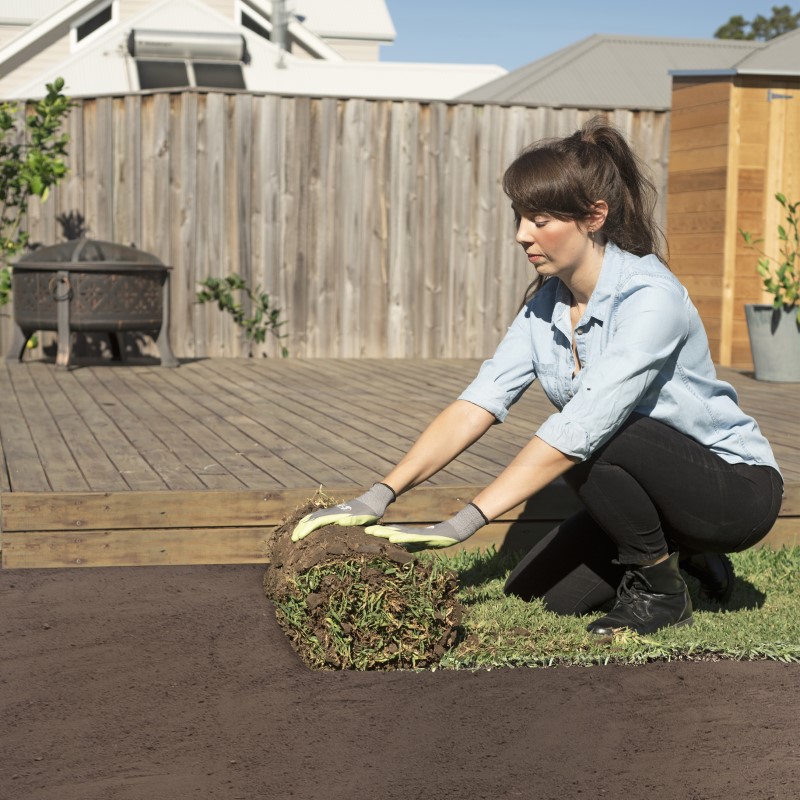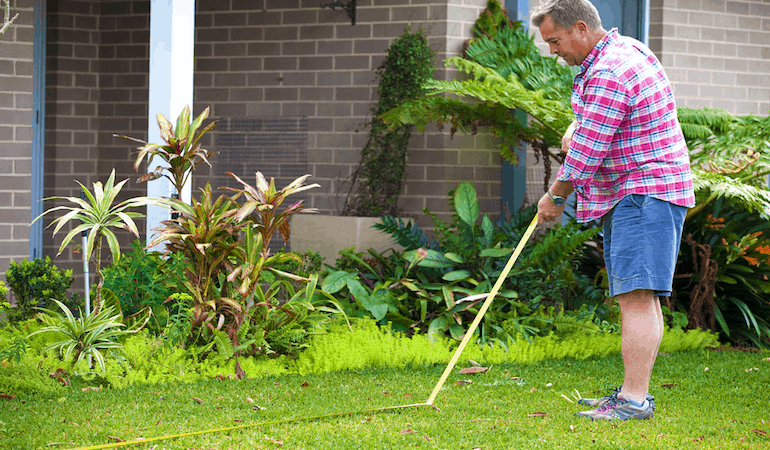How to Lay Turf Perfectly
Turf is a great option for anyone looking to give their backyard some curb appeal. It’s an easy way to make your yard look professionally landscaped, without the expensive price tag.
Laying turf is also a great way to reduce water use, save time and money on maintenance, and create an attractive new area of lawn. The key to laying turf successfully is getting the grass in good condition before you install it.
This article will go over the basics of how to lay turf and how long it will take you to get the job done. Once you’re finished reading this, head on over to our online store for all your lawn care needs!
Complete Step by Step Guide
Step 1 – Planning for Your New Turf
What is the best month to lay fresh turf?
It depends on the climate, but usually it is safer to lay turf during September to November when the temperature is milder.
The ideal time of year will depend on your climate region, although typically October-November or March–April are best.
However, if you’re laying your turf in an area with lots of humidity (e.g., most of NSW and Victoria) then cooler months such as June-September are better as they’ll dry out faster.
And as Brisbane’s average rainfall between July and December ranges from 100mm – 300mm a month making these times not ideal for turf laying due to soft ground issues when wet and fragile ground issues when dry .
Can You Lay Turf in Winter?
Yes, you can lay turf in winter.
In Australia, the lawn-laying season is typically October to March but this can vary depending on your location and area of the country.
It’s a tough job to start with so be sure ground is well prepared before laying turf in winter
What Tools Will You Need To Lay Turf?
The list of tools you’re likely to need for installing turf rolls are:
- Rotary Hoe – or Mattock if you do it by hand
- Wheelbarrow
- Garden hose and sprinkler
- Gardening gloves
- Work boots
- Tape measure
- Rake
- Garden Shears
- Long knife or old hand saw
- Spreader
- Lawn roller to smooth out the surface
How Long Does it Take to Lay Turf?
For experienced turf installers they’ll have your new lawn laid in no time, but for the DIY, handyman or homeowner, you should allow approximately 2 to 2½ hours per 50m² of turf rolls.
Step 2 – Choose the Right Grass Type for Your Yard
How To Choose The Right Turf For Your Garden?
Sometimes the right grass type can require some compromises.
For example, because you have children and/or a dog you might need a lawn that repairs itself and recovers quickly from damage.
The compromise is that rapid re-growth usually goes hand in hand with higher maintenance–which means more mowing!
The decision on which type of lawn to have depends largely on personal preference.
However, there are certain considerations that should be taken into account when making this choice: do you only want a beautiful green lawn all year round?
Does it need to withstand your children and dog’s playing habits or just look pretty in the springtime?
Here are some of the most popular natural turf varieties to choose from:
Palmetto Buffalo
Palmetto Buffalo is the perfect choice for all year round colour, drought and shade tolerance. It has a lovely soft green leaf that delivers medium growth with strong damage recovery abilities.
Sapphire Buffalo
When you have pets, children and a tendency to worry about the state of your lawn; Sapphire Buffalo is an excellent option for you, it has a lush and vibrant green with soft leaves that are lovely to walk on.
It’s fairly hardy, but also has good damage repair abilities so grass looks as beautiful as it did when you first installed the turf.
Sir Walter Buffalo
One of the most durable, stress-resistant grass types is Sir Walter buffalo.
Sir Walter turf thrives with pet and kids in your backyard, as it can withstand some serious wear without wilting or becoming too dry to walk on.
It also recovers quickly if damaged!
With a soft leaf blade that does not cause itchiness after contact with skin, this hardy plant will keep you happy for years (and we’ve got proof).
Kikuyu
Kikuyu is one of the most popular grasses for home lawns in Australia, but it’s not exactly your typical low-maintenance variety.
It thrives on neglect and grows so fast that you can expect to be running over with a lawnmower at least once per week during spring, summer, and well into autumn.
It can become invasive if planted near garden beds where runners will grow underneath and cause problems!
Couch
Couch is a grass that thrives in the summer heat, does not require frequent mowing to keep it looking good and healthy.
It can also be grown much shorter than other lawn varieties because of its lateral growth habit which means you don’t have to spend hours on end doing yard work!
Step 3 – Soil Preparation
How Deep Should my Turf Underlay Be?
Typically you’ll need between 100 mm to 150 mm of turf underlay soil.
To help with calculating the lawn area volume, that would equate to either 0.1 metres for 100 mm or 0.15 metres for a depth of 150 mm.
How Much Turf Underlay Do I Need?
In order to calculate the amount of soil you need multiply the turf area in square metre by the depth to get your volume .
For example if you have an area that 6 metres x 10 metre and allowing for 100 mm of turf underlay the calculation would be as follows:
6 m x 10 m x 0.1 m = 6 m3
Should You Compact Turf Underlay Before Laying Turf?
Best practices when laying turf include using a roller to firm the soil, but don’t compact it too much or you’ll be left with an uneven lawn.
Do You Need Sand To Lay Turf?
If the soil is not deep, apply a sandy soil underlay consisting of 80% sand and 20% soil.
The material should be laid to a depth 100 mm and kept 25 – 30 millimetres lower than paths, driveways, or mower strips so that by the time you finish laying turf it will be at about this height as well.
How To Level a Lawn Before Laying Turf?
To lay new lawn, first clear the area of all stones and debris.
Remove any existing turf or weeds that may be there as well by using a Sprayer with Glyphosate (Roundup) no less than 14 days before laying down your new lawn.
Next prepare the soil by tilling for at least 10cm deep – this is important because without good drainage water could become trapped in low lying areas.
It is important to make sure that there are no rocks or other debris in the area where you will be laying new turf.
What is Sandy Loam and Do I Need It?
Sandy Loam is not actually a requirement for laying new turf, but it does provide the environment with good drainage and aeration.
As the name suggests, sandy loam is soil that has more sand in it than clay.
It’s well-drained and porous, making it a great addition to any garden or lawn with different needs from just one type of soil.
Step 4 – Measure How Much Turf You Need
How To Measure Your Garden For New Turf?
The best way to calculate exactly how much turf you’ll need is to measure the area of your garden, then use pre-calculated estimators to determine the amount of metres of turf.
Our easy to use ” Turf Calculator,” has been specifically designed just for this purpose.
Simply add you yard dimensions into our calculator using the width multiplied by the length of your garden in metres (the two measurements that are used).
Step 5 – Step by Step Lawn (turf) Installation
Is It Easy to Lay Turf Yourself?
It’s easy enough to lay turf as a beginner if you take the time to follow step-by-step instructions.
If you ever get stuck or you’re not sure what to do, we’re always here to help, so don’t hesitate if you ever need anything.
How Quickly Should You Lay Turf?
Lay the turf on the same day of your turf delivery.
Should You Water Soil Before Laying Turf?
The soil should have a degree of moisture content. Not too wet or dry.
Which Way Do You Lay Turf?
Start from the longest straight line or edge e.g. driveway, path, paved area or fence.
Roll out turf and make sure all joins are butted tightly together with no overlapping.
Rows of turf should be in a brick pattern when laid to reduce the incidence of water erosion especially on steep slopes and grades.
How To Lay Turf On a Slope
If laying turf on slopes, lay rolls across slopes rather than down.
If slopes are very steep you may need to hold roll in place with a stake until root growth stabilises turf roll.
What Tools To Use For Cutting Turf?
Cut turf roll with a sharp knife or spade when laying around odd shapes, trees or garden beds.
Tips For Newly Laid Turf
Smooth out any air pockets in the turf by rolling or tamping to ensure that there is good contact between the roots of the turf and the soil.
Top dressing may be applied after laying to fill joins and level any depressions. Washed river sand or turf underlay should be used for the top dressing and should be no more than 10 – 12mm thick.
The leaf of the turf should be visible after the top dressing.
Pre-Turf Fertilisers
It’s important to make sure your soil is in tip top condition before laying new lawn.
Applying a starter or pre-turf fertiliser before laying turf will encourage deeper root growth and give your new lawn a real head start.
Step 6 – Caring For Your New Lawn
The turf will require watering immediately after it has been laid. The turf needs to be soaked but not saturated.
After the initial watering, depending on Sydney Water exemptions and restrictions, the turf should be watered early morning and afternoon and kept moist for approx. 14 days.
After the first 14 days you should notice that the turf has taken root and cannot be lifted.
At this stage watering can be reduced to every second day depending on the weather for a further 7 – 10 days until it becomes an established lawn.
Once the lawn is established, one of the most important things to remember is not to over water. 15mm of water once per week is usually adequate to keep Sir Walter in a good condition.



